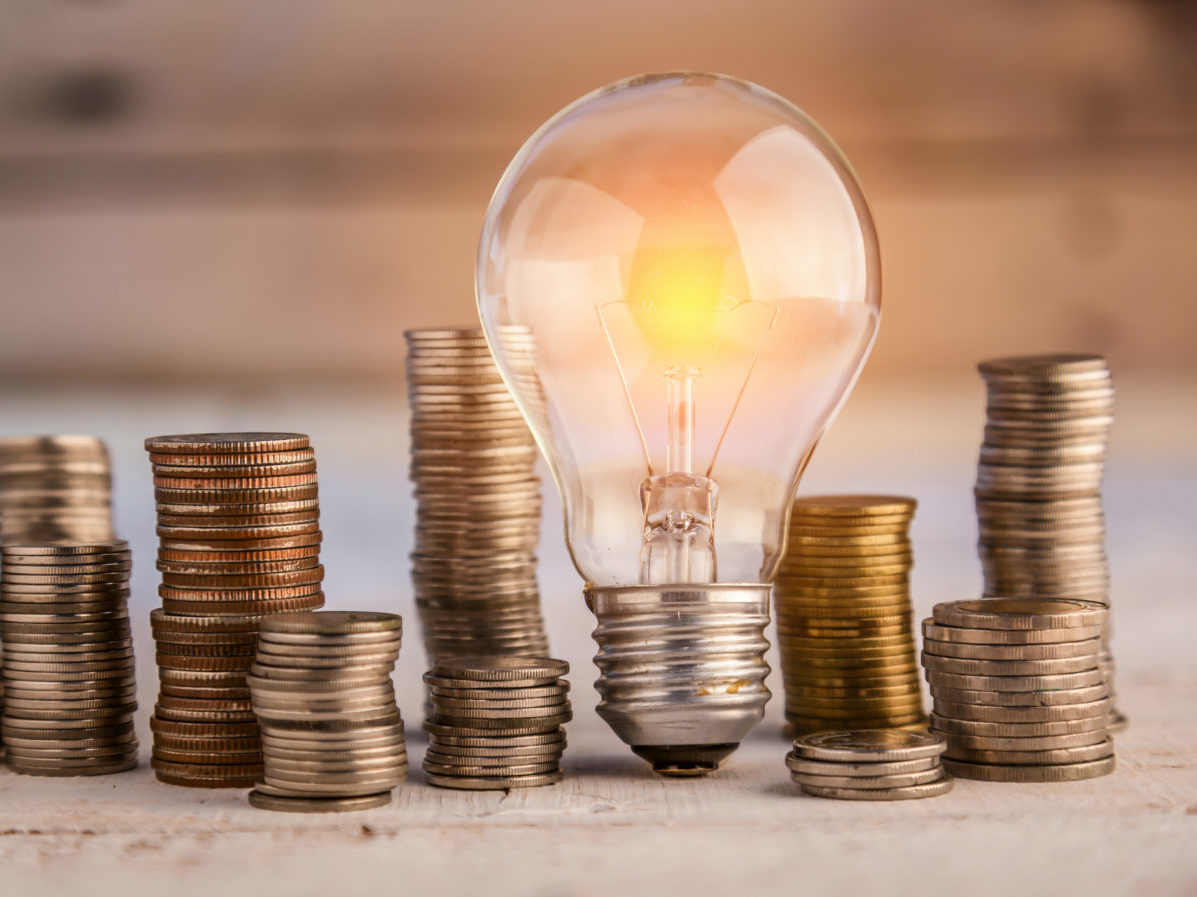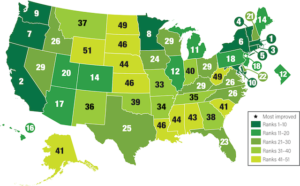
NJ, CT, CO, SD improve most; MA and CA lead.
As the U.S. government loosens environmental rules, states are investing more in energy efficiency and delivering increased power savings, according to the 2018 State Energy Efficiency Scorecard. This 12th annual report from the American Council for an Energy-Efficient Economy (ACEEE), released yesterday, identifies the leaders (Massachusetts and California), the most-improved states, notably New Jersey, the states that lost ground such as Iowa, and those lagging behind, including North Dakota, West Virginia, and Wyoming.
The scorecard offers mostly good news about energy efficiency — the nation’s third-largest electricity resource. In response to federal efforts to freeze U.S. vehicle and appliance standards, quite a few states worked to retain their own standards and to promote electric vehicles as well as zero-energy buildings. While some, like Iowa and Connecticut, saw legislative attacks within their states, others — including Virginia, New York, New Jersey, Colorado, and Arkansas — unveiled plans to boost investments in efficiency and clean energy, often driven by concerns about climate change.
The scorecard, which ranks states based on 32 metrics in six areas, has these key findings:
New Jersey improved the most, moving up five ranks to #18. The Garden State set new annual energy savings targets and took steps to rejoin the Regional Greenhouse Gas Initiative, a multistate cap and trade emissions compact. Missouri, Connecticut, Colorado, and South Dakota showed marked improvement. Other improved states include Nevada and North Carolina.
Massachusetts continued to rank #1 overall. It launched a plan to set new three-year energy savings targets and approved utility spending for grid-scale modernization. A close second is California, which led efficiency efforts in three areas: buildings, transportation, and appliances. These leaders are followed by Rhode Island, Vermont, Connecticut, New York, Oregon, Minnesota, Washington, and Maryland.
Iowa fell the most, moving down five spots to #24. This drop was due mostly to a bill signed earlier this year (SF2311) that imposes a restrictive cap on efficiency programs and allows customers to opt out of paying for some of them. Sixteen other states also fell in the rankings.

States increased investments in energy efficiency in the utility sector. They spent nearly $8.0 billion last year, up from $7.6 billion in 2016. The result was a 7.3% increase in electricity savings (nearly 26.5 million megawatt-hours) — enough to power about 2.5 million US homes per year.
States ramped up efforts to promote zero-emission vehicles (ZEV), mostly electric, as the federal government sought to freeze fuel economy standards for cars and SUVs. California joined with eight other states in rolling out an updated ZEV plan, which incentivizes consumers to buy ZEVs. Missouri moved to incentivize the rollout of more EV charging stations, and Oregon to require new buildings be ready to charge EVs.
More states pushed for zero-energy construction (buildings that produce as much power as they use) largely through tougher building codes. California calls for all new homes and commercial buildings to be net zero-energy by 2020 and 2030, respectively. Vermont, Rhode Island, Oregon, Washington, the District of Columbia and Massachusetts have incorporated net zero-energy construction into long-range plans.
“States are stepping up on energy efficiency, including major new commitments in New Jersey, New York, and Virginia, helping to address the very limited activity from Washington, DC,” noted ACEEE Executive Director Steve Nadel. “These efforts contributed to the 2.25 million-plus efficiency jobs last year in the United States.”.
States ramped up efforts to create the utility of the future. Ohio, Rhode Island, New York, California, and Minnesota have major plans in place. They’re looking to modernize grid infrastructure, leverage data, and deploy more distributed energy resources.
California and Vermont led in setting appliance standards. California, which has standards for 100-plus products, set new standards for computers, computer monitors, and portable electric spas in 2017. This year Vermont adopted new standards for 16 products.
States focused on innovative financing solutions. Six states (California, New York, Connecticut, Hawaii, Nevada, and Rhode Island) have set up green banks, and Washington, DC, passed legislation this year to do the same.
The scorecard assesses state policies and programs in six areas: utilities, buildings, transportation, state government, combined heat and power, and appliance standards. It highlights best practices for promoting energy efficiency, typically the lowest-cost way to meet customers’ energy needs. Such efficiency improves air and water quality, strengthens grid resilience, promotes equity, and improves health and comfort.














